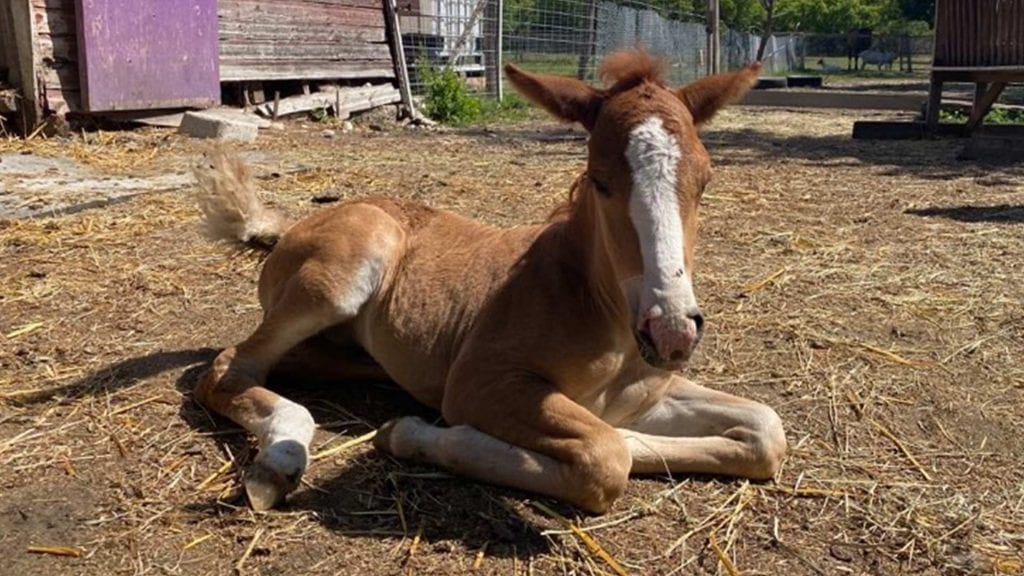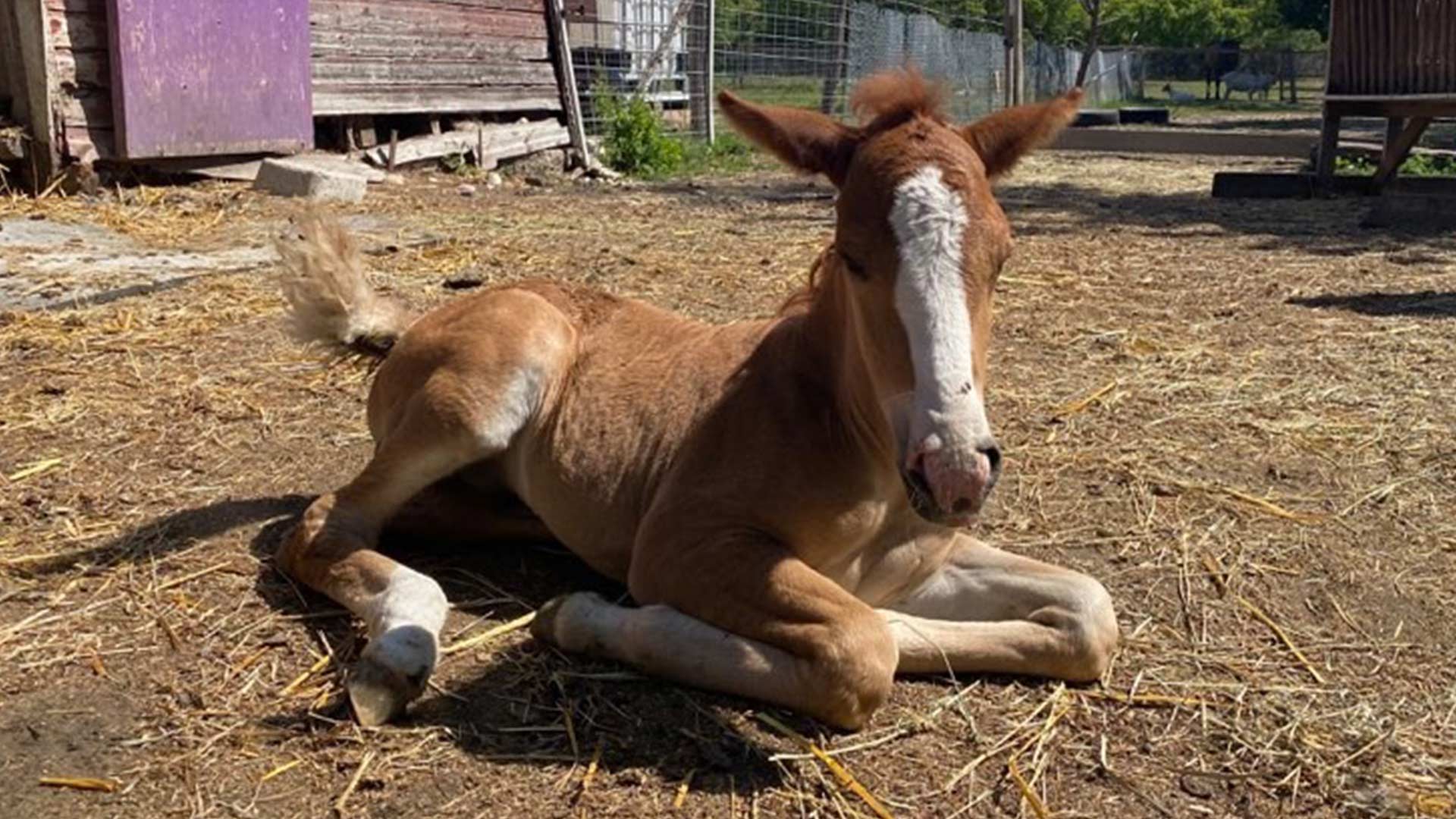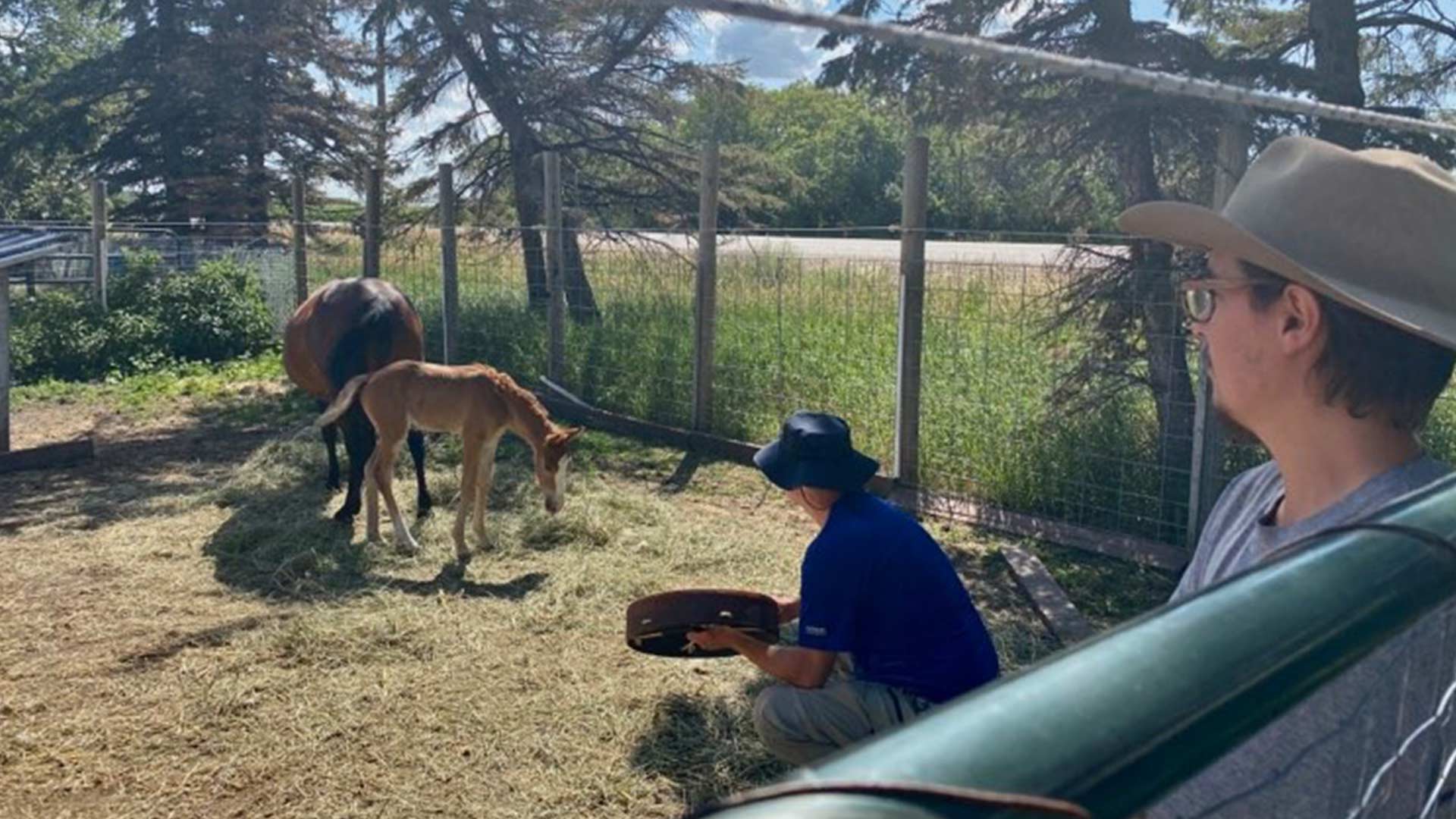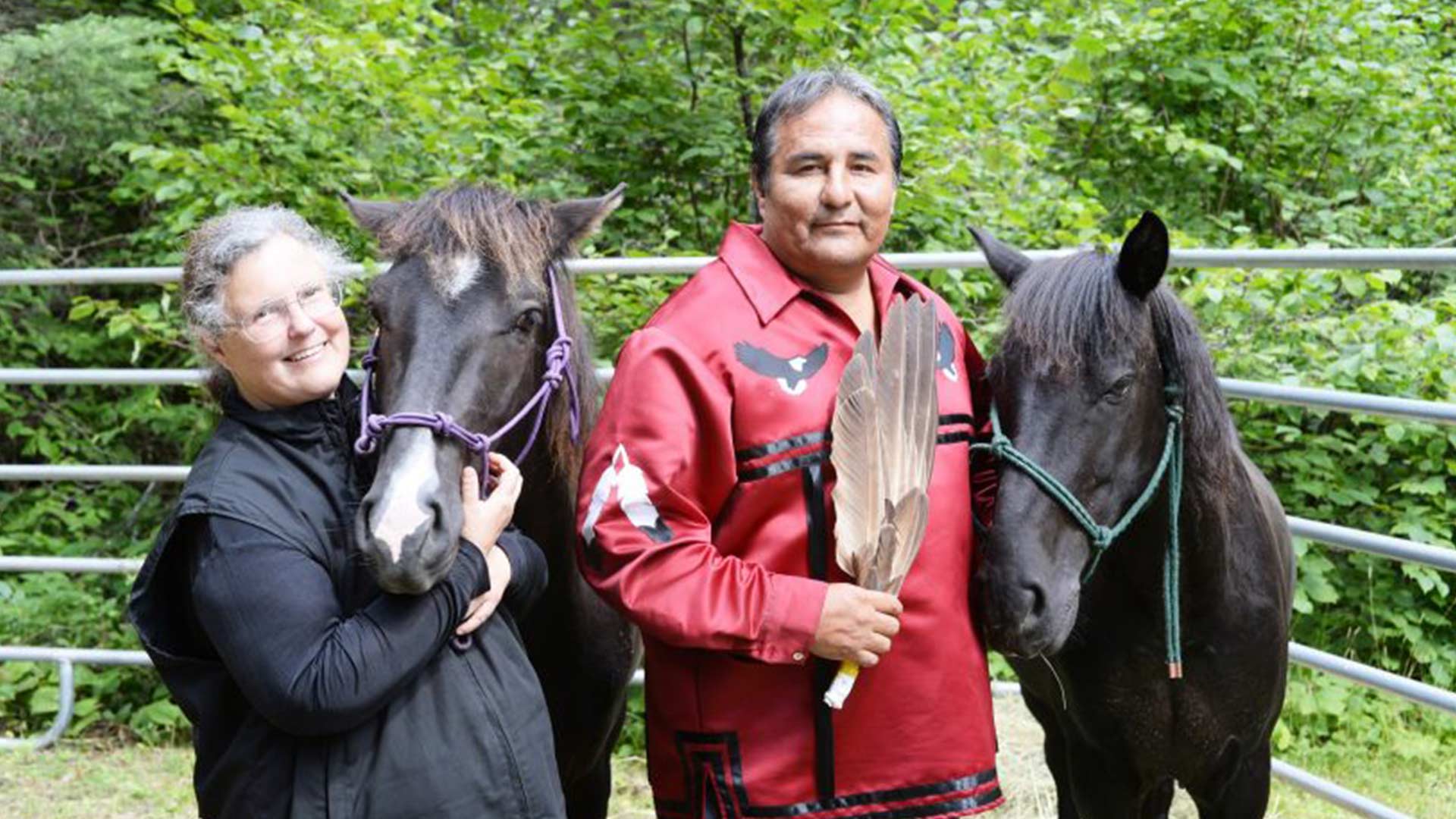
Giigwanens or Little Comet is the first Ojibwe pony to be born in Manitoba in decades. Photo: Brittany Hobson/APTN
Under the mid-afternoon August sun, Giigwanens, an Ojibwe pony, dances between her mother and the shade.
The sandy brown foal whose name translates to Little Comet in English, is a cherished new member of the Kirczenow farm.
Just on the outskirts of Winnipeg, Trevor Kirczenow’s small acreage is home to typical farm animals including chickens, turkeys and goats – but it’s also home to Giigwanens, a rare breed of horse.
Giigwanens is cause for celebration because this is the first time in decades a new foal was born in the province.
“It’s exciting and also really nerve-wracking,” Kirczenow told APTN News. “We want to take the best care of them that we can. It’s a big responsibility, I think, because they are so rare and so special.”

The Ojibwe pony is believed to be the only existing breed of horse developed by First Nations people in Canada.
The horse has gone by many names including Lac La Croix Indian Pony or simply the Native pony, but whatever name it’s gone by, oral history suggests versions of the breed existed pre-contact.
The pony is considered to be a rare breed with only 200 approximately left in North America. In Manitoba there are fewer than 10.
Kirczenow and his husband, who are non-Indigenous, asked an Anishinaabe friend to help name the filly or young female horse.
Their friend chose the name because the filly was born the day after the comet NEOWISE made its closest approach to Earth last month.
Kirczenow recalls the warm summer morning she was born. He set out to do chores with his daughter when they noticed the mare along with their American Quarter horse were not in the field as they usually were first thing in the morning.
Upon further investigation they found the mare laying down in the barn and within minutes she began to give birth to the filly, “it happened very fast,” said Kirczenow.

Giigwanens’ mother Asemaakwe (Tobacco Woman), has been with Kirczenow’s family since 2017.
Last summer they decided to bring in a stallion to breed with her.
Kirczenow is the registrar with the Ojibwe Horse Society, an organization that does conservation work across the continent.
His job is to keep track of when new foals are born and to collect DNA samples. He took on the role after purchasing Asemaakwe from a Manitoba auction in 2017.
Prior to this he had never heard of the breed, which is known to be quite friendly.
“The most important feature of them is the way they relate to people. They’re very friendly… they’re wanting to investigate, and that’s just how they are,” said Kirczenow.
While the Ojibwe pony is considered smaller than other breeds they can work just as hard.
“They’re very sturdy and stocky so they can carry a reasonably-sized adult person and also a load. They just work well for living in the woods,” explained Kimberlee Campbell.
“There are thoughts these could be the remnants of a horse that survived the ice age.”
Campbell and her husband Darcy Whitecrow own and operate Grey Raven Ranch in Seine River First Nation in northwestern Ontario.
The couple started the ranch in 2014 and currently are caretakers to eight Ojibwe ponies.
The non-profit organization aims to, “help our young people develop confidence and leadership skills by entrusting them with the future of the Ojibwe horse,” according to their website.
Whitecrow is from Seine River and remembers as a child the ponies lived freely in the area.
“They just ran around like they were part of the deer herds and everything like that,” she says.
Whitecrow says Anishinaabe in the region would use the horses for travel and to transport food and tools. They were then free to return to the wild. This is why people choose to use the term caretakers instead of owners.
Many herds were displaced because of development in northwestern Ontario and some researchers say outsiders would round up groups of the horses to sell off to glue and meat factories.
By the 1970s there were only four remaining mares left.
As the story goes, the Canadian government attempted to exterminate the mares saying they were nuisances, explained Campbell.
That is when a group of men on both sides of the United States and Canadian border stepped in and transported the horses to a reservation in Minnesota. About 20 years ago the breed was repatriated back to Canada.

Whitecrow says he started the ranch to bring the pony back to his people.
“We like to say that we’re training the horse but in actual reality the horse is teaching us to be who we are,” says Whitecrow.
It’s been a slow process to get numbers back up for a couple of reasons – breeding is expensive and people generally prefer bigger horses, according to Campbell.
It’s estimated there are 10 major breeders from Quebec to Alberta down to Alabama.
At one point Rhonda Snow was one of them.
The Métis woman is from northwestern Ontario and currently lives near Fort Frances.
This is where she was caretaker to roughly 23 Ojibwe ponies until health and personal issues forced her to surrender the ponies to a livestock auction. This is where Kirczenow bought Asemaake in 2017.
“It’s an exciting time for Manitoba to have [a foal] born on soil there,” Snow told APTN by phone from her home.
Snow has been researching the breed since she was a young girl when the ponies still lived on the land. Later as an adult she worked with Rare Breeds Canada, a charity specializing in livestock conservation efforts, to help bring some ponies back to southern Ontario.
“I’m hoping we can light a fire under peoples’ hearts a little bit here to understand that we can live a good life by learning what these tiny ponies have to offer without taking from them,” said Snow.
Snow now documents the stories she’s heard about the ponies from Elders through paintings on hide or rocks. It’s her way of preserving the history and legacy of the Ojibwe pony.
One day she hopes there’s enough Crown land so the ponies can go back into the wildlife like they once were.
Campbell calls the birth of the new foal a miracle.
The stallion used to breed with the mare was originally from Snow’s farm and was also put up for auction. He went to a home in Ontario but had to be rehomed last year.
That’s when Kirczenow took him in before the stallion settled in a home in Alberta.
“This breed has been on the edge so many times on the edge and somehow something happened to bring new life into this breed,” said Campbell.
Kirczenow says it will be a few years before the filly is ready to breed but until then he is happy to celebrate a new beginning.
“I think it is one thing we can do with the land that we have…and play a small part in helping maintain and restore the breed,” he said.
“It’s a tiny piece of reconciliation.”









